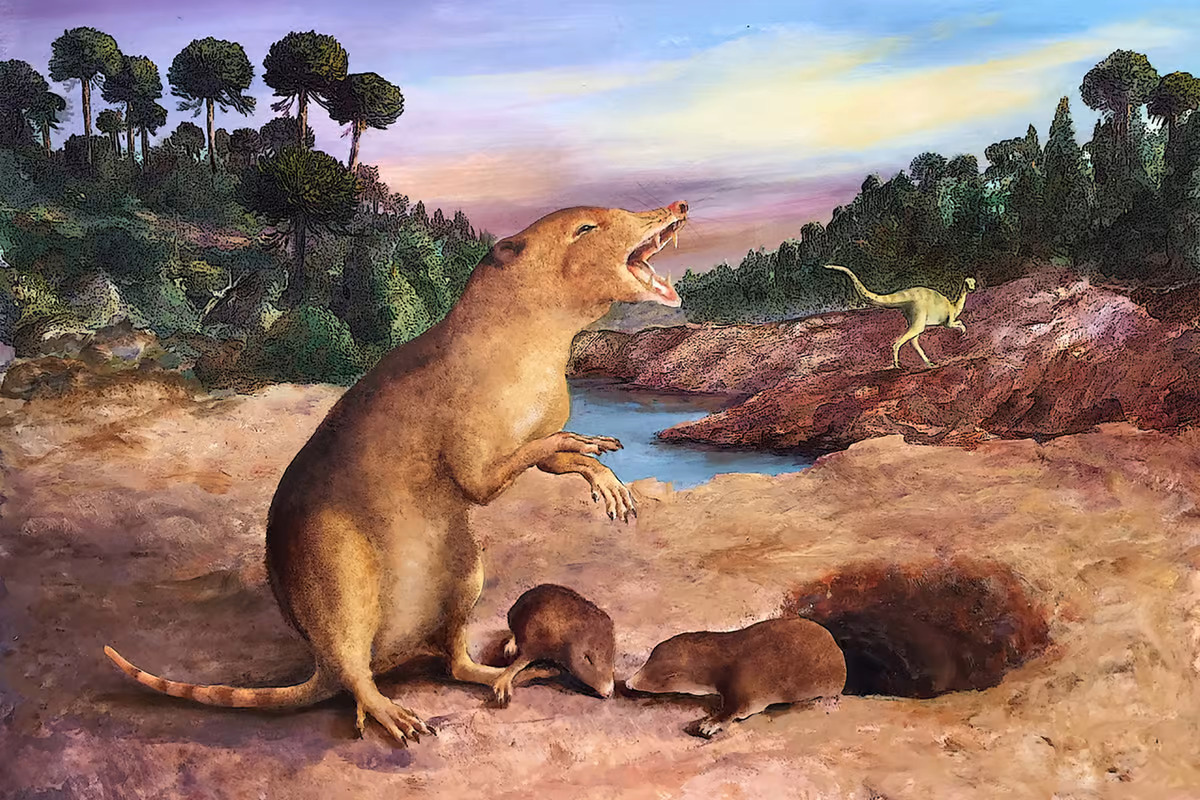 An artist’s impression of Brasilodon, a 225-million-year old animal that scientists claim is now the earliest known mammal. 2022 Anatomical Society/Wiley
An artist’s impression of Brasilodon, a 225-million-year old animal that scientists claim is now the earliest known mammal. 2022 Anatomical Society/Wiley
Brasilodon quadrangularis measured about 20 cm (8 in) long, and would have scurried under the feet of the first dinosaurs during the Late Triassic period. It belongs to a group of animals known as the cynodonts, and while it’s long been thought to be a very close relative of mammals it sits outside of the mammaliaformes clade, which contains all known mammals, living and extinct.
In the new study, an international team of researchers has shaken up the family tree, proposing that Brasilodon should be crowned the earliest known mammal. That’s because of one very specific feature, newly identified in the animal’s fossil remains, that’s unique to mammals.
We all remember losing our baby teeth as kids, before growing a new set of adult teeth. That pattern of two – and only two – successive sets of teeth is known as diphyodonty, and it’s common to all mammals. By contrast, reptiles and some other creatures regenerate teeth many times over during their lives. Diphyodonty is part of a complex process of skull anatomy changes during the early stages of a mammal’s life, which is linked to suckling milk and other mammalian traits.
The researchers on the new study closely examined the anatomy of the teeth and jaws of Brasilodon specimens, and compared them to more recent mammals. In doing so, they found evidence of secondary teeth that would replace primary ones in a highly ordered and timed manner, indicating diphyodonty.
That makes Brasilodon the oldest vertebrate to demonstrate this dentition pattern, and by extension the earliest known mammal. It predates the currently accepted record-holder, Morganucodon, by about 20 million years. That said, the researchers don’t claim that the case is closed – instead, they’re open to scientific argument.
“The evidence from how the dentition was built over developmental time is crucial and definitive to show that Brasilodons were mammals,” said Professor Moya Meredith Smith, contributing author of the study. “Our paper raises the level of debate about what defines a mammal and shows that it was a much earlier time of origin in the fossil record than previously known.”
The research was published in the Journal of Anatomy.
Source: Natural History Museum
–
–









Most Viewed
Experimental drug combo halts growth of deadly lung cancer in mice
Old anti-psychotic drug reveals new treatment pathway for chronic pain
Single-serve Coffee Balls touted as compostable alternative to pods
Antarctica’s Doomsday Glacier “hanging on by its fingernails”
X-ray laser converts plastic into diamonds, recreating Uranus rain
CalWave concludes 10-month test of its submerged wave energy generator
Seriously small tiny house offers off-grid freedom and ships worldwide
Cannabis legalization in US projected to cost big pharma billions
Lenovo smart glasses create a virtual big screen on the go
Dubbel utility ebike can haul cargo and passenger for up to 80 miles
Landmark study finds causal link between nature walks and stress reduction
New evidence affirms link between long COVID and chronic fatigue syndrome
Zeekr goes to production on 1,000-km electric car using CATL batteries
USB4 Version 2.0 unveiled with double the transfer speeds
Discovery explains how unkillable tardigrades survive without water